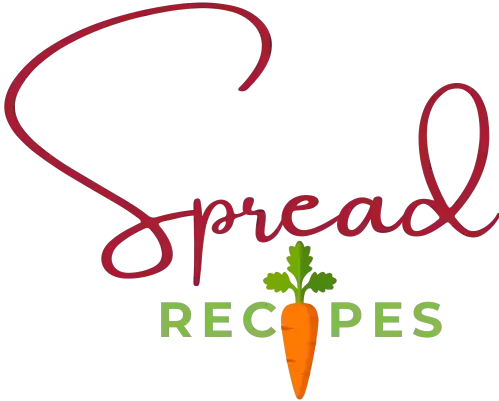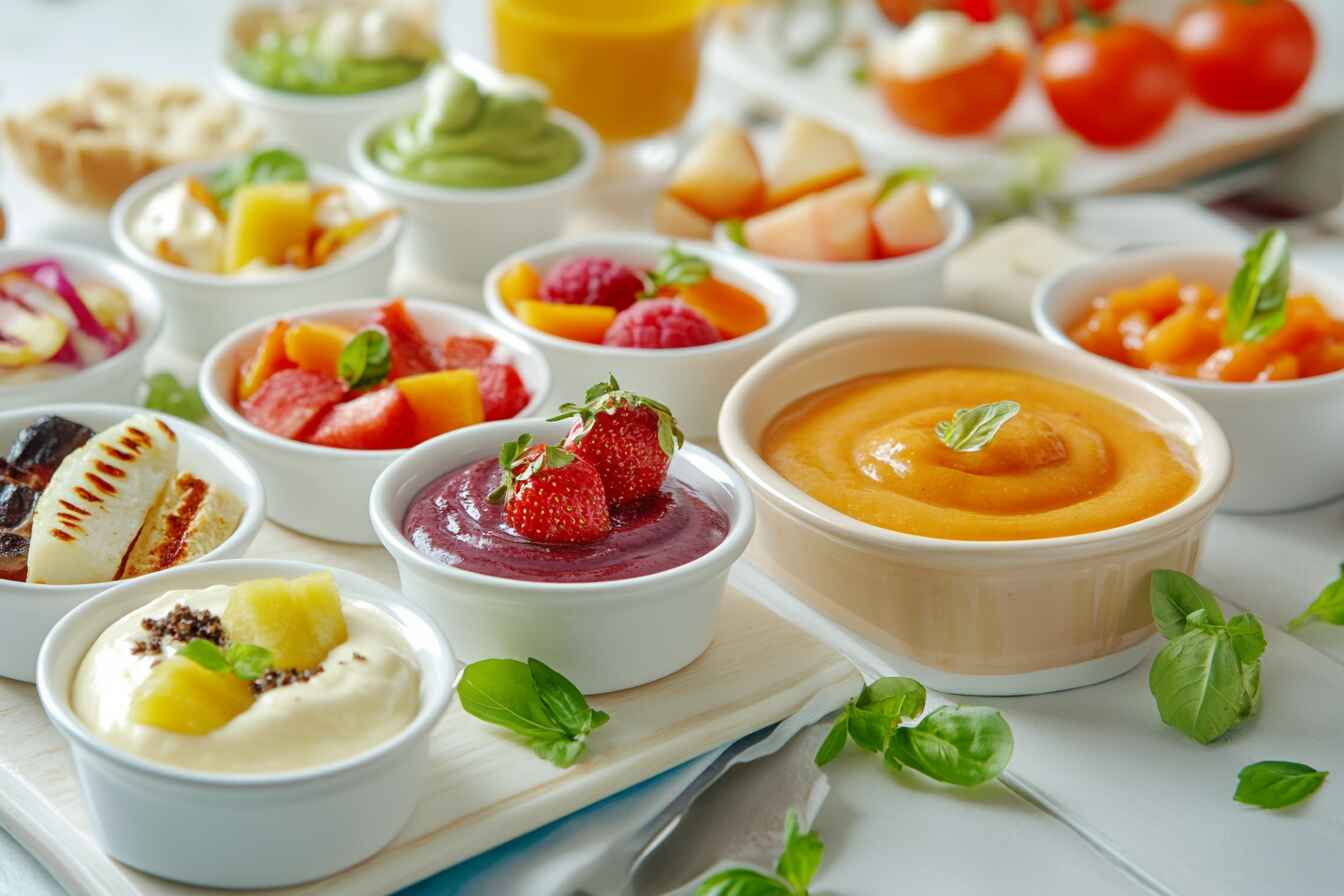Making puree might sound like a simple task, but there’s a lot of nuance that can turn this everyday kitchen process into a culinary art form. Whether you’re a beginner or someone who’s been cooking for years, learning how to make puree will open up a world of flavors, textures, and possibilities in your kitchen. But why is it so important? What makes a puree different from simply cooking and mashing your food? Let’s dive in and explore the world of purees together! 😋
Table of Contents
So, what exactly is puree? Well, a puree is simply food that’s been processed into a smooth, creamy consistency by blending, mashing, or grinding. It’s a way to break down foods like fruits, vegetables, or even meats into smaller, manageable pieces, creating a velvety texture that’s perfect for soups, sauces, baby food, or just as a side dish. Purees are often used in both savory and sweet dishes, and they add flavor, color, and smoothness that can elevate your meals.
When you learn how to make puree, you’re not just learning to cook; you’re learning to unlock new ways to enjoy your favorite foods. Whether you’re preparing a delicious carrot puree to serve as a side dish or a smooth apple puree for a dessert, mastering the art of making purees can make all the difference in the kitchen. But how can you ensure you’re doing it right? Let’s dive into the basics!
The Basics of Making Puree: Key Ingredients and Tools
Before you start pureeing, it’s important to know what ingredients you’ll need and what tools will help you achieve that perfect, silky smooth texture. Pureeing isn’t about throwing everything into a blender and hoping for the best there’s some technique involved. But don’t worry; we’ll break it down for you!
Common Ingredients Used for Puree
First things first: you need to choose your ingredients! While you can make purees out of just about anything, some common ingredients include:
- Vegetables: Potatoes, carrots, peas, sweet potatoes, and spinach are some of the most popular choices. Vegetables tend to be hearty and easy to cook down into smooth purees.
- Fruits: Apples, pears, bananas, and strawberries are also great options. Fruits can be pureed into thick, flavorful smoothies or used as baby food!
- Legumes: Beans and lentils, once cooked, can also be pureed to create creamy dips or spreads like hummus.
- Meats and Poultry: Yes, even meat can be pureed! This is a great way to make meat-based sauces or baby food.
Choosing the right ingredient depends on what you’re aiming for whether it’s a savory dish, a smoothie, or a nutritious baby food puree.
Essential Tools for Making Puree
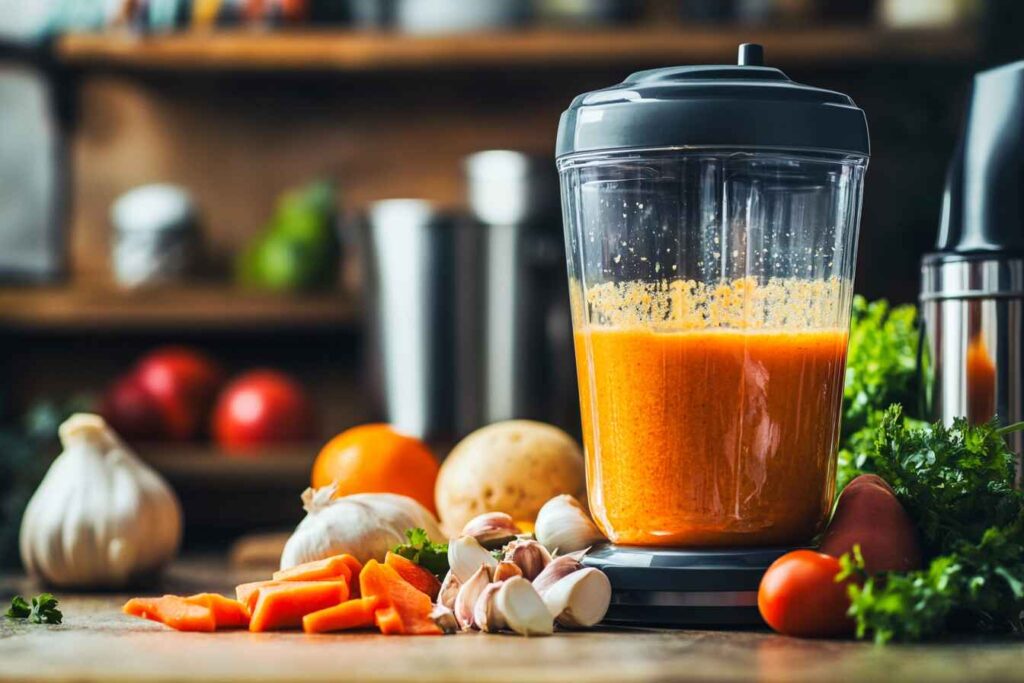
Now that you’ve chosen your ingredients, let’s talk about the tools you’ll need to make your puree smooth and creamy:
- Blender: A high-speed blender is a go-to tool for many types of purees. It’s quick and efficient, turning almost any ingredient into a silky smooth texture.
- Food Processor: A food processor can be a great option for larger batches of purees, especially when you want to control the texture.
- Immersion Blender: For small quantities or delicate ingredients, an immersion blender (also known as a hand blender) can make pureeing super easy right in your pot or bowl.
- Potatoes Masher or Ricer: If you’re making a vegetable puree like mashed potatoes or sweet potatoes, a good old-fashioned masher or ricer can be a fantastic tool to achieve a smooth finish without the need for an electric appliance.
These tools are essential to making the perfect puree. Whether you use a food processor or just a simple masher, the goal is always the same: to create a smooth, creamy consistency that enhances the natural flavors of the food. And, just as with any culinary technique, you’ll get better with practice! 💪
Different Types of Purees: From Vegetables to Fruits
Purees come in all shapes and forms, from velvety vegetable purees that serve as side dishes to sweet, flavorful fruit purees that make the perfect topping or dessert. But not all purees are created equal! Let’s look at two major categories: vegetable purees and fruit purees, and how to make each one.
Vegetable Puree: Benefits and Recipes
Vegetable purees are not only tasty but also packed with nutrients. When you puree vegetables, you unlock their flavors and make them easier to digest, which is why they are a go-to for many parents feeding their babies solid food. But pureeing veggies isn’t just for babies! You can make delicious vegetable purees for soups, sauces, and even as a side dish to accompany your main course.
Popular vegetable purees include:
- Carrot Puree: A smooth and subtly sweet puree that pairs well with soups or as a side dish to meats.
- Sweet Potato Puree: Perfect for adding richness to your meals, sweet potato puree is a comforting, velvety option that’s naturally sweet and packed with vitamins.
- Pea Puree: Green and fresh, pea puree is often used as a side or in soups and sauces for added texture and flavor.
Making vegetable puree is simple: First, cook your chosen veggie until tender, either by steaming or boiling, then blend or mash it until smooth. You can even add a little bit of water or vegetable broth to adjust the consistency.
Fruit Puree: Benefits and Recipes
Fruit purees are just as versatile as vegetable purees, but they tend to be sweeter. Fruit purees are great for making smoothies, desserts, or even as baby food. The process for making fruit puree is similar to vegetables but often requires less cooking, as many fruits break down easily once blended.
Popular fruit purees include:
- Apple Puree: Sweet and mild, apple puree is a classic choice for desserts or to sweeten savory dishes like roasted meats.
- Banana Puree: Bananas are naturally soft and break down easily, making them perfect for smoothies, baby food, or as a base for pies and cakes.
- Berry Puree: Whether it’s strawberries, blueberries, or raspberries, berry purees are tangy, flavorful, and add a pop of color to any dish.
Fruit purees are often made by simply blending the fruit in a food processor or blender. You can add sweeteners like honey or maple syrup for extra flavor, or a squeeze of lemon juice to brighten up the taste. Fruit purees can also be used to top oatmeal, yogurt, or even pancakes talk about versatility! 😍
Step-by-Step Process: How to Make Vegetable Puree
Now that you understand the basics, let’s walk through how to make a perfect vegetable puree. We’ll take sweet potatoes as an example here’s how to make a delicious, smooth sweet potato puree!
Preparing the Vegetables
The first step is preparing your vegetables. Start by washing and peeling your sweet potatoes (or whatever veggie you’re using). Cut them into smaller chunks so that they cook faster and evenly. Don’t forget to remove any seeds or stems if necessary this will help you get a smooth puree without any unpleasant textures.
Cooking Techniques for Pureeing Vegetables
There are a few different methods you can use to cook your vegetables before pureeing them:
- Boiling: The most common method for softening vegetables. Simply boil your sweet potato chunks in water until they’re fork-tender (about 10-15 minutes for sweet potatoes).
- Steaming: Steaming helps preserve more nutrients compared to boiling, and it’s a great method for delicate veggies like spinach or peas.
- Roasting: Roasting vegetables like carrots or butternut squash adds a caramelized, deeper flavor to your puree.
Once your vegetables are cooked, it’s time to blend them!
Using a Blender or Food Processor
Now that your veggies are cooked, it’s time to turn them into a puree. Place the cooked veggies into your blender or food processor. Add a little bit of water, broth, or milk to help get things moving, depending on how thick or thin you want your puree to be.
Pulse the blender or food processor until the vegetables are fully pureed. Scrape the sides as necessary to ensure everything is blended evenly. Voilà! You’ve made your vegetable puree. Wasn’t that easy?
Step-by-Step Process: How to Make Fruit Puree
Ready to try a fruit puree? Let’s take apple puree as an example. This process is just as easy as vegetable purees but tends to require less cooking.
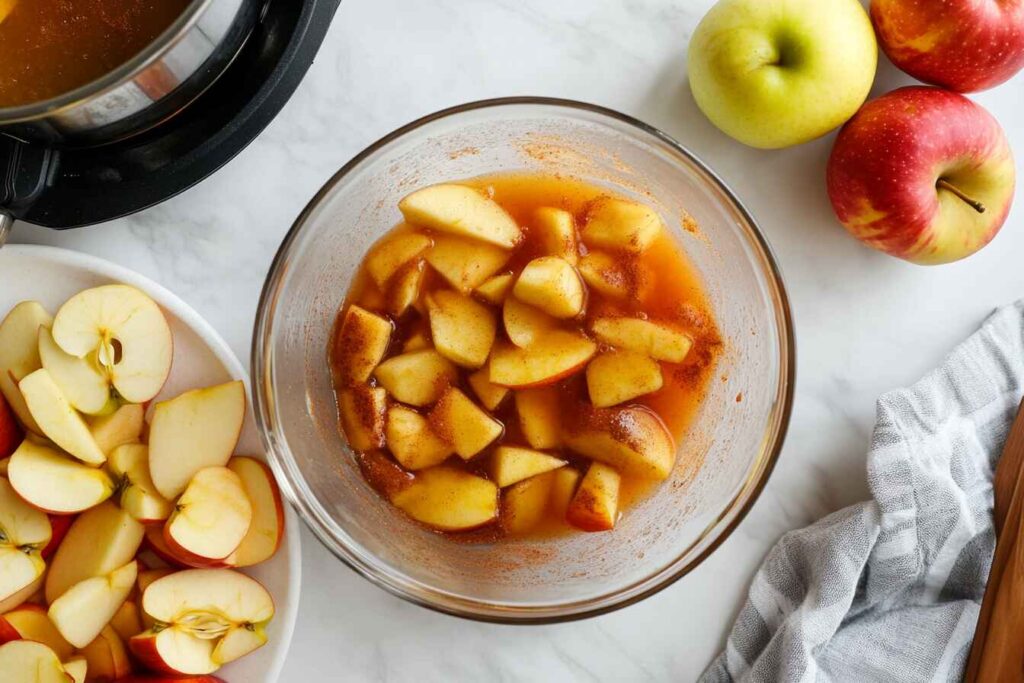
Selecting the Right Fruit for Puree
When making fruit puree, choosing the right fruit is key. Apples are a great choice for a sweet, versatile puree, but you can use other fruits like pears, peaches, or berries. Opt for fruits that are ripe and sweet for the best flavor.
Techniques for Pureeing Fruits
For fruit purees, you’ll want to peel and chop your fruit into small pieces. If you’re using apples, you can cook them for a few minutes in water or juice until they soften. If you’re making berry puree, there’s no need to cook them just blend them as they are.
Once the fruit is ready, simply blend it in your food processor or blender, adding a little water or juice to help it blend. Sweeten it with a bit of honey or maple syrup, if desired. And there you go a perfect fruit puree!
So, whether you’re making fruit or vegetable purees, the process is pretty simple, right? In the next part, we’ll cover some common problems and solutions you may encounter when making puree and other creative uses for your delicious creations!
Puree Storage: How to Keep Purees Fresh and Tasty
Now that you’ve mastered the art of making purees, you might want to store them for later use. Whether you’re making a big batch for the week or preparing baby food ahead of time, proper storage is key to maintaining freshness and flavor. Let’s talk about how to store your purees and make sure they stay delicious for as long as possible.
Freezing Puree: Best Practices for Long-Term Storage
If you want to store your purees for an extended period, freezing is the way to go. Freezing preserves the texture and flavor of your purees while keeping them fresh for months. Here’s how to do it:
- Cool Before Freezing: Let your puree cool to room temperature before freezing. This helps prevent condensation and ice crystals from forming, which could alter the texture.
- Use Freezer-Safe Containers: Store your purees in airtight containers or freezer bags. You can also use ice cube trays to freeze individual portions, making it easy to thaw just the amount you need.
- Label and Date: Don’t forget to label your containers with the type of puree and the date it was made. This will help you keep track of how long it’s been in the freezer.
Frozen purees can last for up to 3-6 months, depending on the ingredients, so you can make a big batch and have it on hand whenever you need it!
Refrigerating Puree: Tips for Keeping It Fresh
If you plan on using your puree within a few days, refrigerating it is a great option. Here’s how to keep your purees fresh:
- Cool Before Storing: Just like with freezing, always let your puree cool before placing it in the fridge.
- Airtight Containers: Store your purees in airtight containers to prevent air from getting in and causing the puree to dry out or lose flavor.
- Consume Within a Few Days: Purees stored in the fridge are best consumed within 3-5 days. If you want to keep them longer, freezing is a better option.
Refrigerating purees is convenient, especially when you want to use them quickly, but make sure to consume them before they spoil!
Creative Uses for Purees in Cooking
Purees are incredibly versatile, and once you learn how to make them, you’ll find all kinds of ways to incorporate them into your cooking. Let’s explore a few creative ways to use your purees that go beyond just serving them as a side dish.
Using Puree as a Base for Soups and Sauces
Purees make an excellent base for soups and sauces. You can add them to vegetable broths to create creamy, hearty soups without the need for heavy cream. For sauces, you can use a vegetable or fruit puree as a base to thicken the sauce and add richness and flavor. Tomato puree is a classic example, but you can also make creamy sauces using cauliflower or sweet potato purees.
Purees in Baby Food: Nutritional Benefits
Purees are often a go-to for baby food because they’re easy to digest and packed with nutrients. Whether you’re pureeing vegetables like carrots or fruits like apples and pears, you can ensure your baby gets all the essential vitamins and minerals in a smooth, easy-to-eat form. Plus, you can always get creative and mix different ingredients together to make fun, nutritious combinations!
FAQs About Making Puree: Everything You Need to Know
1: Can I make puree without a blender or food processor?
A: Absolutely! You can use a potato masher, immersion blender, or even a hand-held grater for small quantities. Just be prepared for a bit more effort!
2: Can I make purees in advance?
A: Yes, you can! Purees can be made ahead of time and stored in the fridge for a few days or frozen for longer storage.
Q: Are purees good for weight loss?
A: Yes! Many purees, especially vegetable-based ones, are low in calories but high in nutrients. They make great additions to a healthy diet!
Conclusion: Mastering the Art of Puree Making
There you have it the complete guide to making purees! Whether you’re pureeing fruits, vegetables, or even meats, the process is simple and fun. With the right ingredients, tools, and techniques, you can create delicious purees for soups, sauces, baby food, and more. Now that you know the basics, the possibilities are endless!
Remember, making purees is all about experimentation and practice. Don’t be afraid to get creative and try new combinations. The next time you’re in the kitchen, grab your blender and start pureeing who knows what new recipes you’ll come up with!
Print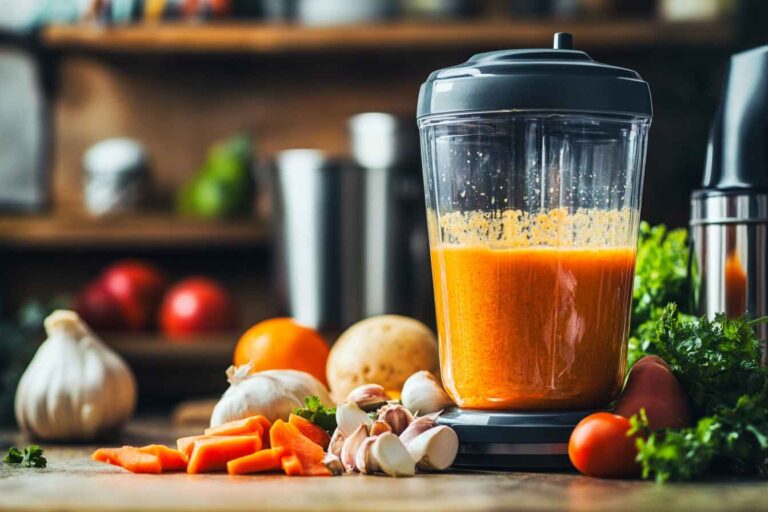
How to Make Vegetable Puree?
This simple, nutritious vegetable puree is perfect for both adults and little ones! Smooth, creamy, and packed with vitamins, it’s a versatile side dish or baby food. You can use any mix of vegetables you have on hand for this recipe.
- Total Time: 20 minutes
- Yield: 4 servings
Ingredients
2 medium carrots,
peeled and chopped,
1 cup cauliflower florets,
1 cup zucchini,chopped,
1/2 cup peas (fresh or frozen),
1 tablespoon olive oil or butter,
salt, to taste,
pepper, to taste,
1/2 teaspoon garlic powder (optional),
1/2 cup vegetable broth or water (adjust for consistency).
Instructions
- Prepare the vegetables: Wash and chop all vegetables into roughly equal-sized pieces for even cooking.
- Cook the vegetables: In a large pot, bring water to a boil. Add the carrots, cauliflower, zucchini, and peas. Cook for 8-10 minutes until tender.
- Drain the vegetables: Once tender, drain the vegetables, reserving some of the cooking liquid for blending.
- Blend the vegetables: Transfer the vegetables to a blender or use an immersion blender. Add olive oil, salt, pepper, and optional garlic powder. Gradually add the reserved cooking liquid or vegetable broth, blending until smooth and creamy.
- Adjust seasoning: Taste and adjust seasoning as needed, adding more salt, pepper, or garlic powder if desired.
- Serve: Serve as a side dish or use as a base for soups and sauces.
Notes
- You can substitute the vegetables based on what you have available. Sweet potatoes, butternut squash, or even spinach can be good alternatives.
- For a smoother consistency, use more vegetable broth or water during blending.
- If making for babies, skip the added salt and pepper.
- Prep Time: 10 minutes
- Cook Time: 10 minutes
- Category: Side Dish, Baby Food
- Method: Stovetop
- Cuisine: International
- Diet: Vegetarian
